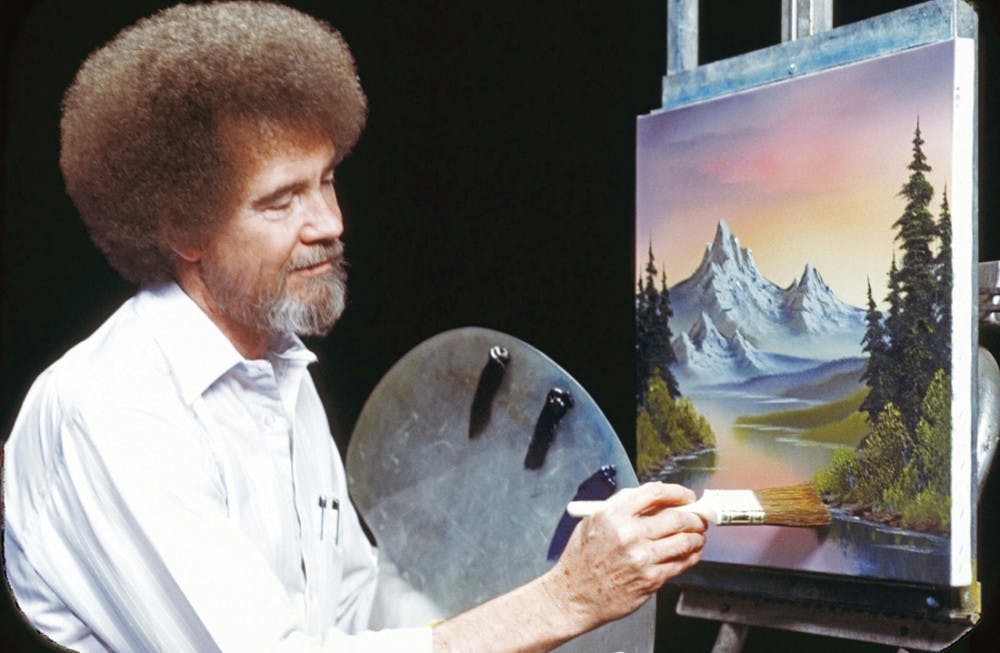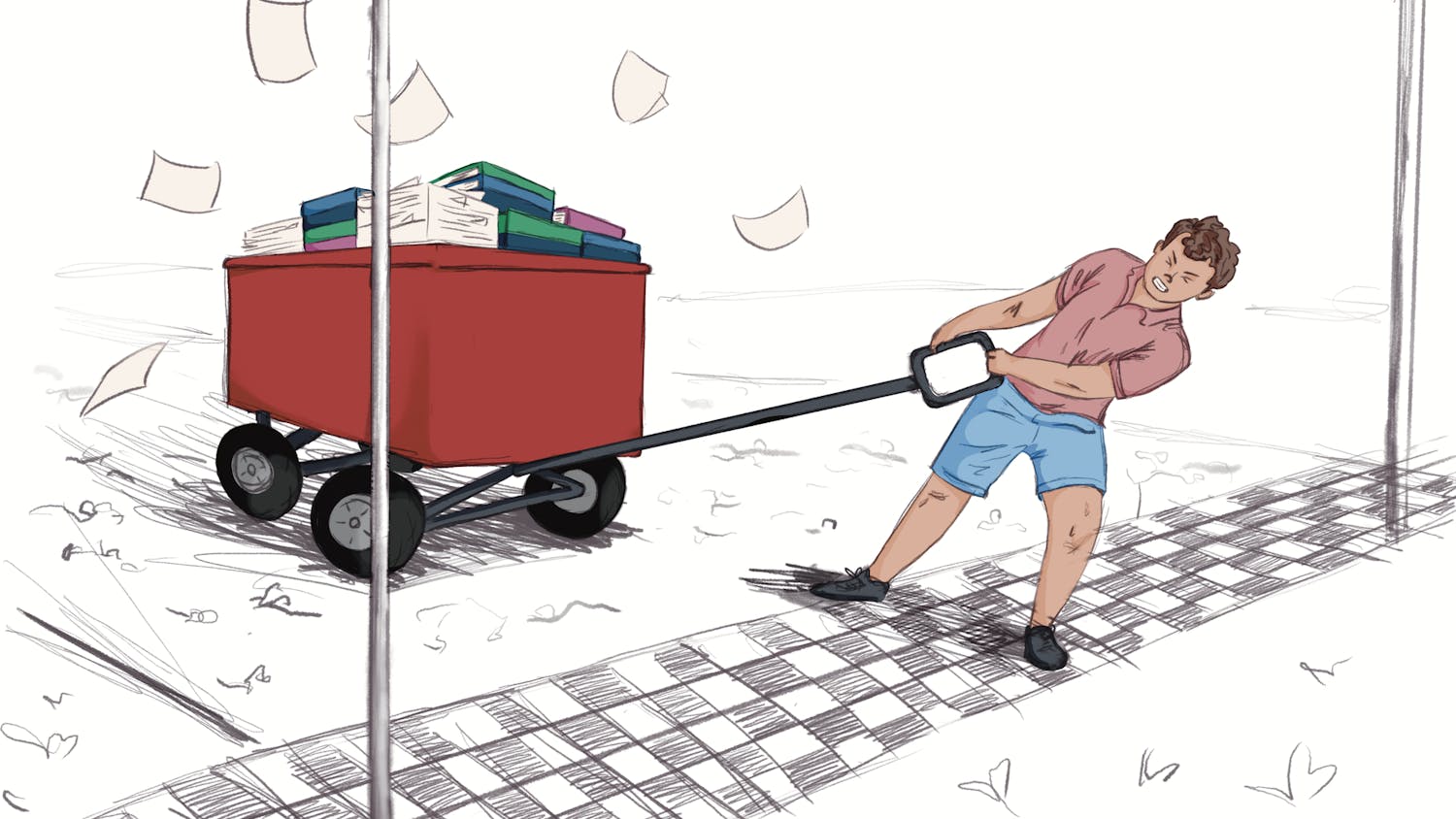On the occasional lazy Saturday growing up, my brother and I sat on the floor by the TV and broke out Crayola watercolors to recreate tranquil Bob Ross landscapes. With reruns of “The Joy of Painting,” Ross’s show from the '80s, flashing on the screen, we’d try to recreate his forest scenes with snow-capped mountains, glistening pools and wispy clouds, as he urged us on with murmurs of encouragement.
“Think like a cloud,” he’d say. “There are no mistakes, only happy accidents.”
Bolstered by kind words, we created art that belonged not in the Smithsonian, but in the Museum of Bad Art in Somerville, Massachusetts. But despite our lack of talent or adequate painting supplies, Ross was the only reason we’d pull out our paint sets outside of art class at school. And we weren’t alone.
In a Bob Ross revival brought on by the release of the book “Painting with Bob Ross” this year and Netflix adding his tutorials to its collection in 2016, people of all ages have broken out old art supplies. Though he died in 1995, Ross lives on in T-shirts, Chia Pet plants and bobble heads. His bushy hair and soothing voice also live on in 3,000 artists who’ve completed a certification course at the Bob Ross Art Workshop to become “Certified Ross Instructors.”
Recently, fans and artists have been campaigning to throw out elitist distinctions between high and lowbrow in order to give Ross’s work a place in art history — something I think he deserves, if not for his artistic talent, for the effect he has had on young artists and on the way people, artists and non-artists alike, experience art.
During his life, Ross’s work was dismissed as kitschy and derivative. His art never made it to museum walls or auctions and instead were sold on eBay. But in this new Bob Ross Renaissance, people are pushing the Smithsonian American Art Museum to put Ross’s work on display and give him space in the “serious” art world.
The kids who grew up watching Bob Ross are now entering the art world, and they’re trying to pull him with them through those golden gates. British artist Neil Raitt grew up watching Bob Ross and collected his instructional books in art school, treating them like step-by-step manuals. Now, Raitt is a world-renowned artist who coats his canvases with Ross-style cabins surrounded by glimmering water and scrubby trees.
Honestly, I don’t know enough about what sets great landscape painting apart from good landscape painting to know if Ross belongs alongside Claude Monet and Paul Cézanne. I only know that Ross inspired even me, lacking any painting ability, to pick up a brush, and I know his legacy lives on in the art world, even though he was never allowed through its gold-rimmed doors while he was alive.
I do know the art world prizes the distinct and unusual, but the point of Ross’s work is to teach others how to mimic his style. And during a time when graffiti was entering the art scene as edgy, uncultured art, Ross’s work faced an uphill climb as lowbrow art in a highbrow category — landscape painting.
But the humor and charm of his permed hair and hippie vibes still captured the hearts of the masses. And in each 26-minute episode, his laid-back nature and the backdrops of his idyllic landscapes made viewers feel calm and included in the intimidating world of art.
And Ross always injected a pleasant dose of imagination into his realistic paintings. Never showing footage or photos of sunlit forests and raging rivers to paint from, Ross taught us to look at an just empty canvas and fill it up with detail drawn from imagination.
As he dabbed his palate and swished his paint, Ross reminded us of our own artistic power. He told us each painting was our world, where we made decisions. He was just showing us how. And with our newfound agency and confidence, we forged ahead, taking our painting wherever we wanted to go.
With Ross, art became fun again, and he showed us painting could and should be accessible to everyone. He broke down hierarchies that made many too scared to really engage with art — an empowering idea that, when paired with his earnestness, has kept Ross’s fan base alive and growing.
In 2013, the YouTube channel Epic Rap Battles of History released a fictional video rap battle between two artists — or at least, of actors playing them. On one side was Bob Ross and his “happy little trees.” On the other was his perceived opposite, Pablo Picasso.
In one stinging verse, “Picasso” spit, “With zero training, you made millions teaching people how to suck at painting.” That sounds more like a compliment to me.






